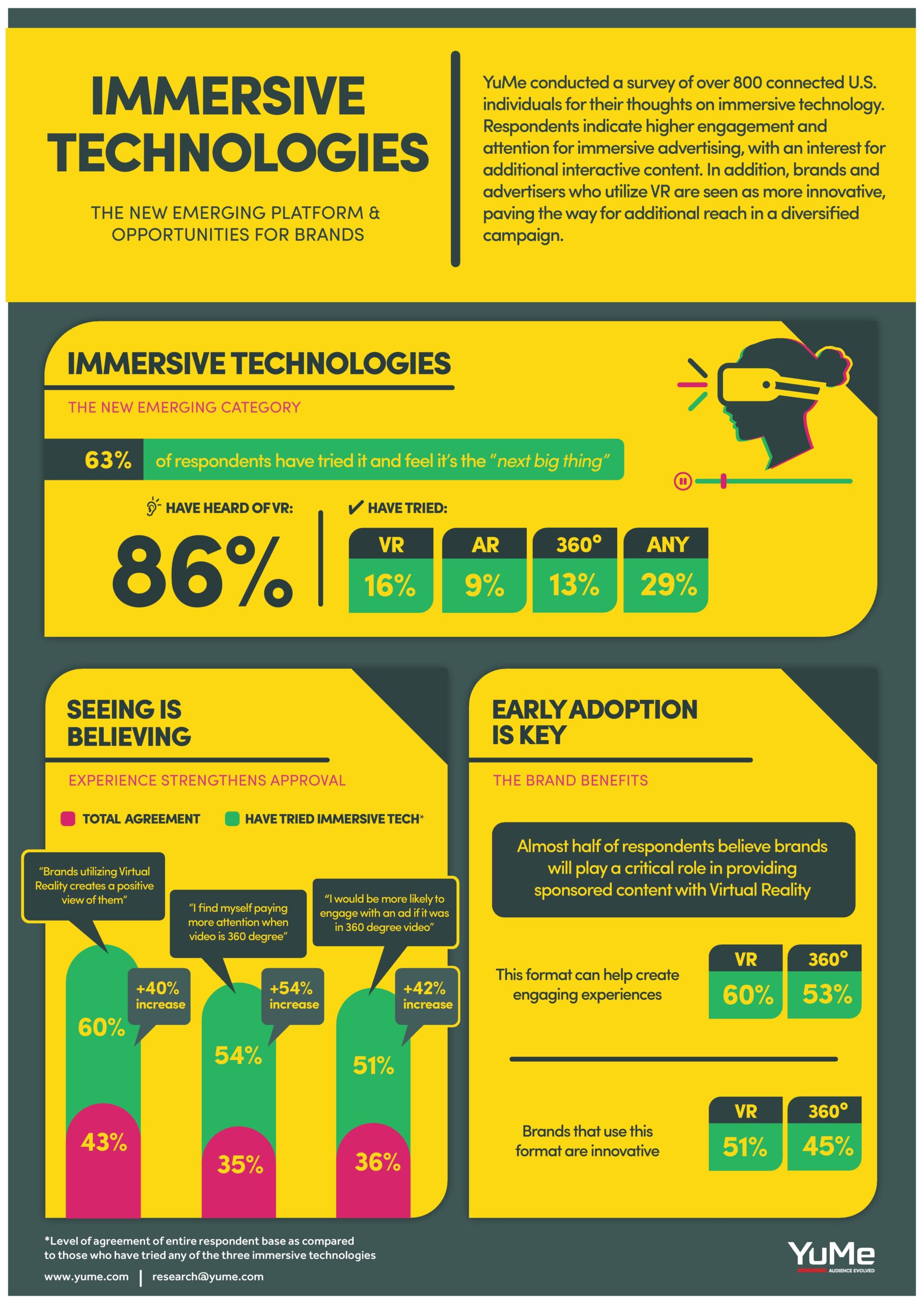Immersive technology refers to technology that blurs the line between the physical world and the digital or simulated world, thereby creating a sense of immersion. This includes using hardware to simulate one or more of the five senses to create perceptually-real sensations. (I.e. From using VR headsets for visuals to implementing artificial smells and tastes.)
In a survey of over 800 U.S. individuals regarding their thoughts on immersive technology, respondents indicated that immersive advertising would yield higher engagement and attention, and expressed an interest for additional interactive content. 86% of respondents have heard of VR, 63% believed that VR is the ‘next big thing’, and 51% said that brands that use VR are more innovative. Meanwhile, only 29% have actually tried immersive technology (e.g. VR, AR, or 360° videos).
Seeing is definitely believing — experiencing immersive technology strengthens approval amongst respondents with approval rates from before and after increasing by as much as 54%. Respondents stated that, “Brands utilizing Virtual Reality creates a positive view of them” and “I would be more likely to engage with an ad if it was in 360 degree video.” Brands’ benefit from immersive technology and early adoption is key. Almost half of respondents believe brands will play a critical role in providing sponsored content with VR. 60% agreed that VR can help increase engaging experiences, and 53% agreed that same for 360°. 51% also stated that brands that use VR are innovative, as 45% stated that brands that use 360° are innovative as well.
Tripp Boyle, VP of emerging platforms at YuMe, stated, “We believe appetite for immersive ad experiences is growing rapidly and that savvy brands and agencies who want to interact authentically with consumers and drive higher engagement should explore these ad formats.” Based on their research, it is clear that immersive technology has had a positive impact on branding thus far.
Below is the infographic by YuMe:
